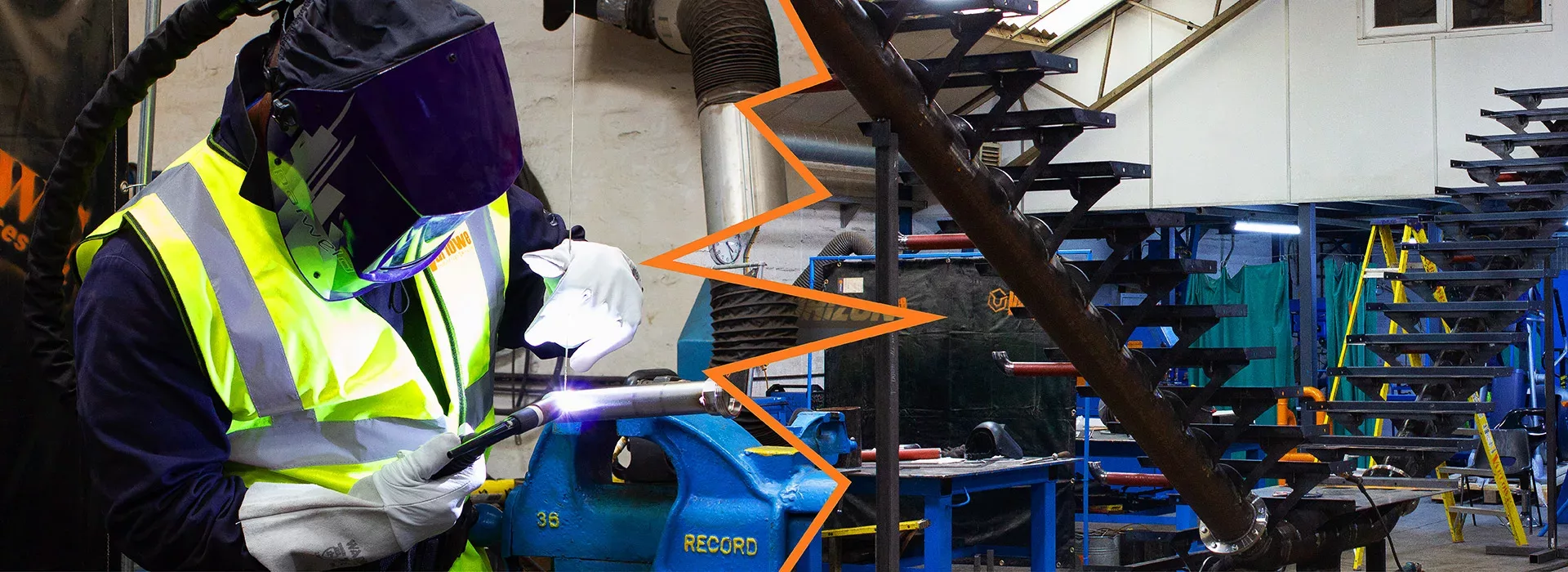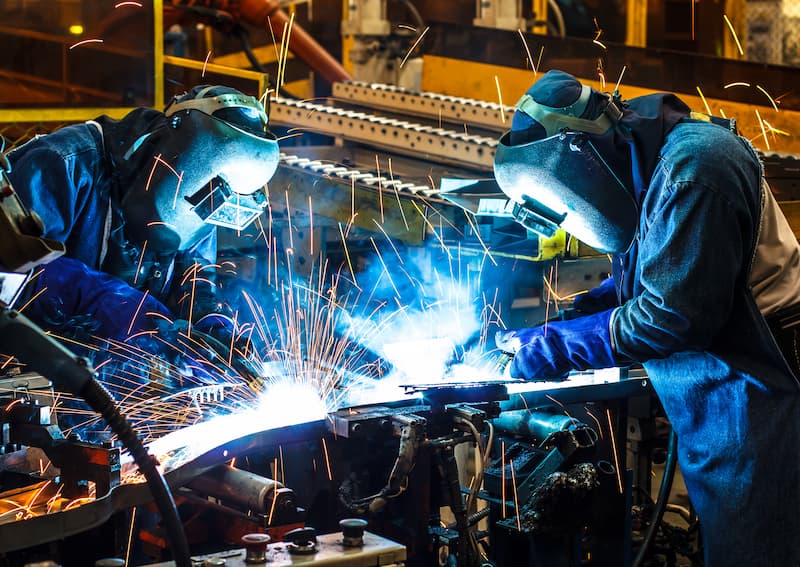Usual Welding Fixing Issues and Exactly How to Address Them Properly
Welding fixings commonly run into a range of issues that can endanger the integrity of the final item. Usual problems include poor infiltration, porosity, and misalignment, to name a few. Each issue presents distinct challenges that require specific techniques for resolution. Comprehending these problems is crucial for welders intending to enhance their end results and skills. This conversation will discover these common welding repair concerns and reliable approaches to address them.
Inadequate Penetration
Poor infiltration takes place when the weld metal stops working to completely fuse with the base product, causing weak joints and possible architectural failings. This problem usually stems from not enough warm input, inaccurate electrode angle, or incorrect welding speed. Welders may encounter insufficient penetration as a result of a miscalculation of the needed specifications for a particular material thickness or kind. Furthermore, contamination on the base material's surface area can hinder reliable bonding, intensifying the problem. To address poor penetration, welders ought to assure appropriate settings on their tools and preserve a clean work surface area. Regular examination of welds is suggested to recognize any shortages early, enabling prompt modifications and the prevention of jeopardized architectural integrity in welded settings up.
Porosity
Porosity is a common issue in welded joints that manifests as little gas bubbles entraped within the weld steel. This issue can compromise the honesty of the weld, causing reduced stamina and possible failing under tension. Belgrade. Porosity normally occurs from contamination, wetness, or inappropriate welding techniques, which allow gases to leave right into the molten weld swimming pool. To resolve porosity, welders should assure correct surface area preparation, maintain a clean workplace, and make use of ideal welding criteria. In addition, selecting the best filler material and securing gas can mitigate gas entrapment. Routine evaluation and testing of welds can aid recognize porosity early, ensuring timely corrective actions are taken, thereby preserving the top quality and integrity of the bonded framework
Misalignment
Misalignment in welding can arise from numerous aspects, consisting of improper arrangement and thermal expansion. Recognizing the root causes is necessary for efficient resolution. A number of adjustment techniques are available to straighten parts and assure architectural stability.
Sources of Misalignment
Welding imbalance often originates from a range of underlying concerns that can jeopardize architectural stability. One primary cause is inappropriate fit-up of components before welding, which can bring about voids and irregular surfaces. Variations in thermal development during the welding process can likewise result in distortion, especially if the products being joined have different coefficients of development. Furthermore, insufficient securing and fixturing might fail to hold components safely in position, causing activity during welding. Inadequately kept equipment, including welding devices and devices, might present variances in the weld grain, additional adding to misalignment. Finally, operator mistake, originating from insufficient training or experience, can additionally play a considerable duty in producing misaligned welds.
Correction Strategies Available
Addressing misalignment efficiently calls for a mix of rehabilitative techniques tailored to the specific issues available. One typical technique is the usage of jigs or components to hold components in the appropriate setting throughout welding, making certain consistent placement. Furthermore, pre-heating the materials can help in reducing distortion and enhance fit-up. For considerable imbalance, mechanical realignment techniques, such as making use of hydraulic jacks or clamps, can be used to remedy the position prior to welding. Post-weld warmth therapy may also be needed to ease anxieties created by imbalance. Cautious assessment and modification throughout the arrangement phase can prevent imbalance issues from ending up being significant troubles, promoting a smoother welding process and boosting total architectural honesty.
Distortion
Distortion is a typical obstacle in welding that can arise from different factors, consisting of uneven heating & cooling. Comprehending the reasons of distortion is essential for executing reliable prevention methods. Addressing this problem not only enhances architectural honesty yet also enhances the overall quality of the weld.
Reasons for Distortion
When based on the extreme warmth of welding, materials frequently undertake adjustments that can bring about distortion. This sensation mainly arises from thermal growth and tightening throughout the welding procedure. As the weld location warms up, the product increases; upon air conditioning, it gets, which can develop inner tensions. On top of that, unequal heating across a workpiece can intensify these tensions, causing warping or bending. The type of product additionally plays a significant function; metals with differing thermal conductivity and coefficients of expansion might respond differently, resulting in unforeseeable distortions. Poor joint style and insufficient fixturing can contribute to imbalance during welding, enhancing the chance of distortion. Recognizing these reasons is crucial for efficient welding repair work and prevention strategies.
Avoidance Techniques
Efficient prevention strategies for distortion during welding concentrate on controlling heat input and guaranteeing appropriate joint layout. Maintaining a regular warmth input assists to reduce thermal growth and tightening, which can lead to distortion. Utilizing methods such as pre-heating the workpiece can additionally lower the temperature slope, promoting consistent heating. Additionally, choosing suitable joint designs, such as T-joints or lap joints, can improve security and decrease stress and anxiety concentrations. Implementing appropriate fixturing to safeguard the work surfaces in position further help in keeping this hyperlink positioning throughout the welding process. Ultimately, staggered welding series can distribute warm more equally, stopping localized distortion. By applying these methods, welders can significantly decrease the probability of distortion and boost the total quality of their welds.
Splitting
Splitting is an usual concern come across in welding repair Web Site work, usually resulting from numerous factors such as incorrect air conditioning prices, product option, or poor joint preparation. The incident of cracks can substantially jeopardize the stability of the weld, resulting in prospective failings throughout procedure. To resolve this problem, welders need to initially analyze the source, guaranteeing that materials are suitable and appropriately chosen for the specific application. Additionally, managing the air conditioning price throughout the welding procedure is necessary; rapid cooling can induce stress and lead to splitting. Proper joint layout and preparation also add to decreasing the threat. Implementing these strategies can enhance weld high quality and durability, eventually minimizing the chance of splitting in completed weldments.

Incomplete Blend
A considerable issue in welding fixings is insufficient fusion, which takes place when the weld steel does not effectively bond with the base material or previous weld passes - Belgrade. This flaw can result in weaknesses in the joint, potentially endangering the integrity of the welded framework. Variables contributing to incomplete combination consist of inadequate warmth input, incorrect welding technique, and contamination of the surfaces being joined. To address this problem effectively, welders ought to ensure correct pre-weld cleaning and surface preparation, along with readjust their welding parameters to achieve appropriate infiltration and blend. Normal inspection during the welding process can likewise help identify incomplete fusion early, allowing go to my blog for prompt rehabilitative actions to enhance the total quality of the weld
Overheating
While welding repairs can enhance architectural integrity, overheating presents a considerable obstacle that can lead to material deterioration. Excessive warm during welding can modify the mechanical residential or commercial properties of metals, resulting in lowered strength, raised brittleness, and bending. This sensation is especially vital in high-stress applications where architectural reliability is extremely important. Determining overheating can involve aesthetic assessments for staining or distortion, as well as checking temperature level throughout the welding procedure. To reduce the risks related to overheating, welders ought to use proper strategies, such as controlling heat input, adjusting traveling speed, and using suitable filler materials. In addition, carrying out pre- and post-weld heat treatments can assist recover material residential properties and improve the general high quality of the fixing, making certain long-term performance and safety.
Frequently Asked Inquiries
What Are the Common Indications of a Welding Issue?

How Can I Evaluate My Welds for High quality?
To check welds for top quality, one can use aesthetic inspections, ultrasonic testing, and radiographic techniques. Each technique guarantees architectural stability, recognizes flaws, and confirms adherence to specified standards, eventually improving the reliability of the bonded joints.
What Safety and security Preventative Measures Should I Take While Welding?
When welding, one need to prioritize safety and security by using suitable personal protective devices, making certain appropriate air flow, safeguarding combustible materials away, maintaining a tidy workspace, and being conscious of surroundings to stop injuries and accidents.
Can I Repair a Weld Without Redesigning the Entire Joint?
Fixing a weld without redoing the entire joint is possible, depending on the damages (Montana Mobile Welding and Repair Fabrication). Methods such as grinding, adding filler material, or utilizing a welding process can effectively deal with certain flaws while protecting the bordering structure
What Tools Are Important for Efficient Welding Services?
Necessary devices for efficient welding repair services include a welding machine, wire brush, grinder, safety equipment, clamps, and filler products. Each tool plays a vital role in making sure top quality and safety throughout the repair work procedure. Porosity typically emerges from contamination, wetness, or inappropriate welding methods, which permit gases to leave into the molten weld pool. Poorly kept tools, consisting of welding devices and tools, might introduce variances in the weld bead, further contributing to misalignment. When subjected to the intense warm of welding, materials often go through changes that can lead to distortion. Breaking is a typical issue come across in welding fixings, usually resulting from various variables such as incorrect cooling prices, material choice, or inadequate joint prep work. A significant issue in welding fixings is insufficient blend, which happens when the weld metal does not effectively bond with the base material or previous weld passes.